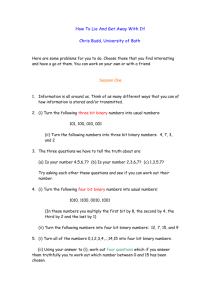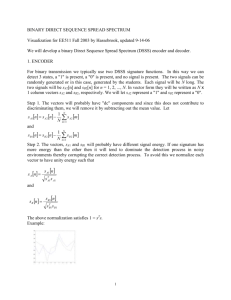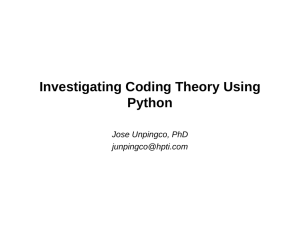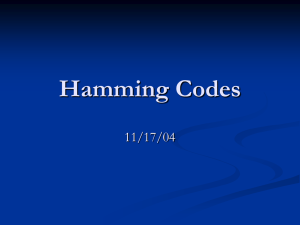Homework 2
advertisement
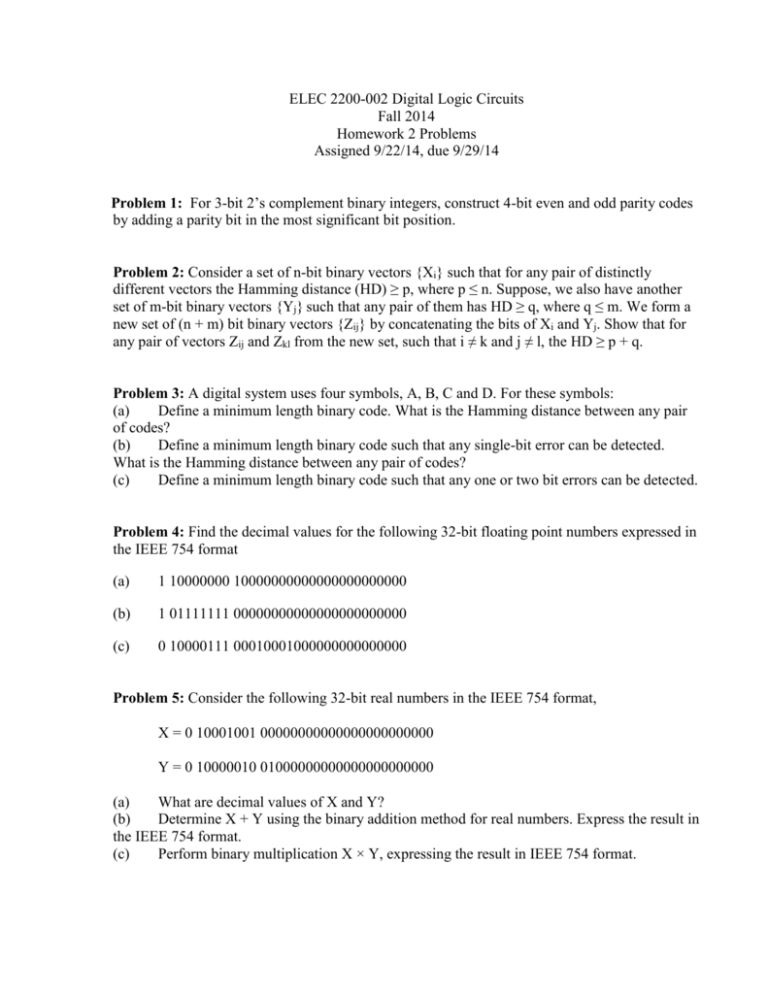
ELEC 2200-002 Digital Logic Circuits
Fall 2014
Homework 2 Problems
Assigned 9/22/14, due 9/29/14
Problem 1: For 3-bit 2’s complement binary integers, construct 4-bit even and odd parity codes
by adding a parity bit in the most significant bit position.
Problem 2: Consider a set of n-bit binary vectors {Xi} such that for any pair of distinctly
different vectors the Hamming distance (HD) ≥ p, where p ≤ n. Suppose, we also have another
set of m-bit binary vectors {Yj} such that any pair of them has HD ≥ q, where q ≤ m. We form a
new set of (n + m) bit binary vectors {Zij} by concatenating the bits of Xi and Yj. Show that for
any pair of vectors Zij and Zkl from the new set, such that i ≠ k and j ≠ l, the HD ≥ p + q.
Problem 3: A digital system uses four symbols, A, B, C and D. For these symbols:
(a)
Define a minimum length binary code. What is the Hamming distance between any pair
of codes?
(b)
Define a minimum length binary code such that any single-bit error can be detected.
What is the Hamming distance between any pair of codes?
(c)
Define a minimum length binary code such that any one or two bit errors can be detected.
Problem 4: Find the decimal values for the following 32-bit floating point numbers expressed in
the IEEE 754 format
(a)
1 10000000 10000000000000000000000
(b)
1 01111111 00000000000000000000000
(c)
0 10000111 00010001000000000000000
Problem 5: Consider the following 32-bit real numbers in the IEEE 754 format,
X = 0 10001001 00000000000000000000000
Y = 0 10000010 01000000000000000000000
(a)
What are decimal values of X and Y?
(b)
Determine X + Y using the binary addition method for real numbers. Express the result in
the IEEE 754 format.
(c)
Perform binary multiplication X × Y, expressing the result in IEEE 754 format.





